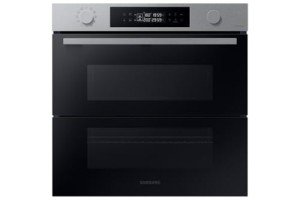11 "Faux Pas" That Are Actually Acceptable To Use With Your Fitted Ovens And Hobs

Fitted Ovens and Hobs: An In-Depth Guide to Modern Cooking Appliances
Fitted ovens and hobs have ended up being a staple in contemporary kitchens, integrating performance, aesthetic appeals, and innovative innovation. These kitchen appliances are developed to perfectly integrate into kitchen surface areas, offering the culinary enthusiast with the tools needed for effective meal preparation while maintaining a smooth and orderly look. In this post, we will explore the different types of fitted ovens and hobs, their benefits, elements to think about when picking them, and responses to frequently asked concerns.
Understanding Fitted Ovens and Hobs
Fitted ovens and hobs are appliances particularly designed to be built into kitchen cabinetry or counter tops for a seamless look. They can differ considerably in style, size, functionality, and features, which accommodate diverse cooking requirements and kitchen designs.
Types of Fitted Ovens
- Built-in Ovens: These ovens are installed straight into a wall or kitchen unit and come in numerous setups and sizes.
- Double Ovens: A built-in variation that includes 2 separate oven compartments, enabling several dishes to be prepared at differing temperature levels at the same time.
- Combination Ovens: These versatile appliances combine traditional baking with microwave technology.
- Steam Ovens: Ovens that use steam for cooking, keeping moisture in food while improving flavors and nutrients.
- Single Ovens: A standard oven system that is the most typical type utilized in homes.
Types of Hobs
- Gas Hobs: These utilize gas burners for cooking, providing instant heat and exact temperature control.
- Electric Hobs: Powered by electrical power, these hobs often include smooth surface areas that make them simple to clean.
- Induction Hobs: Utilizing electro-magnetic energy, induction hobs heat cookware directly rather than the hob surface, making them energy effective and a safe option.
- Blended Hobs: These provide both gas and electric choices, supplying flexibility for cooking designs.
Advantages of Fitted Ovens and Hobs
Fitted ovens and hobs provide many advantages that boost the cooking experience:
- Space Efficiency: Designed to fit into kitchen cabinetry, fitted appliances take up less area compared to standalone designs, creating a structured kitchen layout.
- Aesthetic appeals: Fitted designs often develop a more cohesive and visually appealing kitchen design.
- Modification: Homeowners can pick from a variety of designs, surfaces, and features to match their kitchen decoration and cooking needs.
- Improved Functionality: Many modern-day fitted ovens and hobs boast advanced technology, such as wise controls, self-cleaning features, and exact temperature level settings, which simplify cooking.
- Security Features: Many hobs, specifically induction designs, have security features such as automobile shut-off and kid locks, promoting a safer cooking environment.
Elements to Consider When Choosing Fitted Ovens and Hobs
When picking fitted appliances for a kitchen, numerous factors ought to be thought about to make sure the right choice:
- Cooking Style: Different appliances deal with various cooking habits. ovensandhobs.uk should assess their common meal preparation approaches to discover ideal appliances.
- Space and Layout: Measure the offered area in the kitchen to guarantee that the selected appliances fit nicely without impeding motion.
- Energy Efficiency: Choose appliances with energy-efficient scores to reduce energy costs and ecological effect.
- Innovation and Features: Consider the preferred functions, such as clever technology, self-cleaning modes, or specific cooking functions like steam or convection cooking.
- Budget: Determine a budget before making selections to ensure that the selected designs align with financial preparation.
Table: Comparison of Different Types of Ovens and Hobs
| Device Type | Pros | Cons |
|---|---|---|
| Built-in Ovens | Space-saving, personalized style | Setup expense can be high |
| Double Ovens | Prepare numerous meals at different temperatures | Uses up more space |
| Steam Ovens | Healthy cooking, retains nutrients | Usually higher expense |
| Gas Hobs | Quick heat control, chosen by chefs | Requires a gas line setup |
| Induction Hobs | Fast cooking, energy-efficient, safe | Requires compatible pots and pans |
| Electric Hobs | Easy to clean up, steady cooking temperature levels | Heating times can be slower |
Regularly Asked Questions (FAQs)
1. What is the difference between a built-in oven and a freestanding oven?
A built-in oven is integrated into kitchen cabinets for a seamless look, while a freestanding oven stands alone and is frequently more visible and available.
2. Are induction hobs safe to utilize?
Yes, induction hobs are thought about safe as they only generate heat when compatible pots and pans is positioned on them, lowering the danger of burns.
3. Can I install a fitted oven myself?
While some people may pick to set up fitted ovens themselves, it is generally advised to employ an expert to ensure correct setup and adherence to security standards.
4. What size of oven is perfect for a little kitchen?
In small kitchens, think about compact or single built-in ovens that fit within the offered area without compromising on cooking functionality.
5. Do fitted ovens and hobs need unique upkeep?
Fitted appliances need basic upkeep, such as cleansing and routine checks. However, specific upkeep jobs depend upon the kind of oven or hob.
In conclusion, fitted ovens and hobs represent the epitome of modern-day kitchen design and functionality. By understanding their types, advantages, and considerations, consumers can make informed choices that improve their cooking experiences while fitting effortlessly into their home. Whether developing premium meals or preparing household dinners, fitted ovens and hobs are valuable tools in any culinary area.

